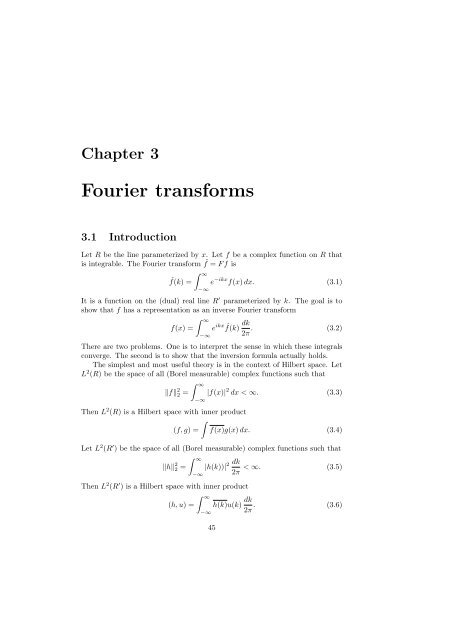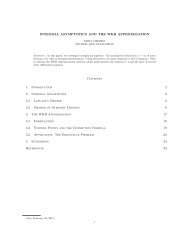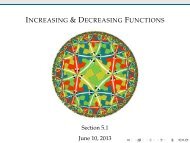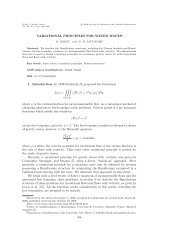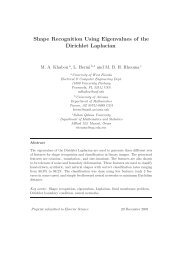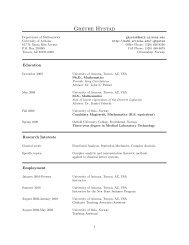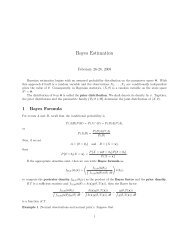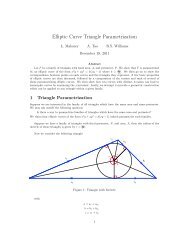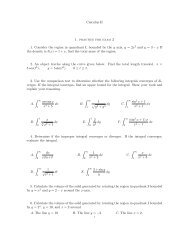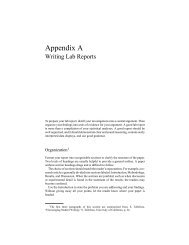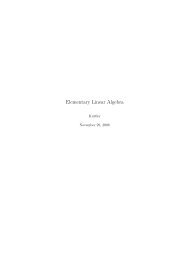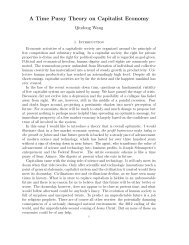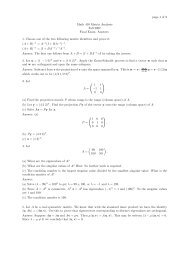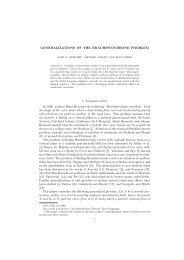Methods of Applied Mathematics Lecture Notes
Methods of Applied Mathematics Lecture Notes
Methods of Applied Mathematics Lecture Notes
You also want an ePaper? Increase the reach of your titles
YUMPU automatically turns print PDFs into web optimized ePapers that Google loves.
Chapter 3Fourier transforms3.1 IntroductionLet R be the line parameterized by x. Let f be a complex function on R thatis integrable. The Fourier transform ˆf = F f isˆf(k) =∫ ∞−∞e −ikx f(x) dx. (3.1)It is a function on the (dual) real line R ′ parameterized by k. The goal is toshow that f has a representation as an inverse Fourier transformf(x) =∫ ∞−∞e ikx ˆf(k)dk2π . (3.2)There are two problems. One is to interpret the sense in which these integralsconverge. The second is to show that the inversion formula actually holds.The simplest and most useful theory is in the context <strong>of</strong> Hilbert space. LetL 2 (R) be the space <strong>of</strong> all (Borel measurable) complex functions such that‖f‖ 2 2 =∫ ∞−∞|f(x)| 2 dx < ∞. (3.3)Then L 2 (R) is a Hilbert space with inner product∫(f, g) = f(x)g(x) dx. (3.4)Let L 2 (R ′ ) be the space <strong>of</strong> all (Borel measurable) complex functions such that‖h‖ 2 2 =∫ ∞−∞Then L 2 (R ′ ) is a Hilbert space with inner product(h, u) =∫ ∞|h(k))| 2 dk < ∞. (3.5)2π−∞45h(k)u(k) dk2π . (3.6)


